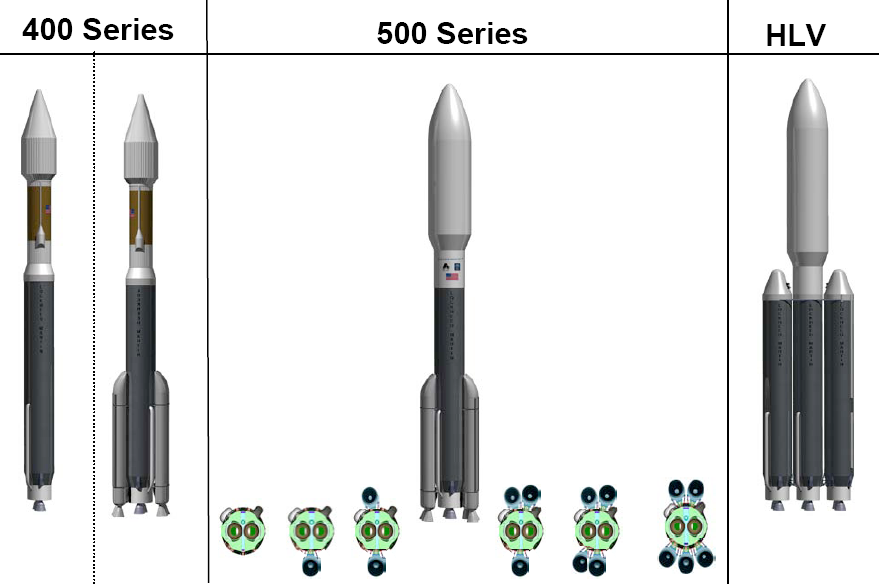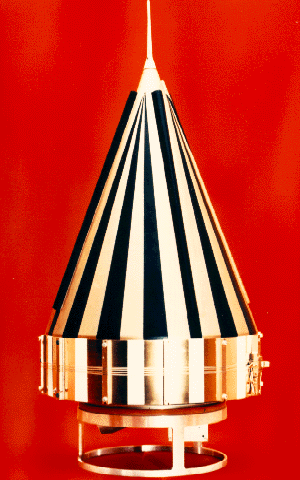|
Spaceport Florida Launch Complex 36
Launch Complex 36 (LC-36)—formerly known as Space Launch Complex 36 (SLC-36) from 1997 to 2010—is a launch complex at Cape Canaveral Space Force Station in Brevard County, Florida. It was used for Atlas (rocket family), Atlas launches by NASA and the U.S. Air Force from 1962 until 2005. Blue Origin has leased the launch site since 2015 in order to build a new launch site for launching the company's orbital spaceflight, orbital rockets. Orbital launches are expected to begin from LC-36 no earlier than Q4 2022, and the first launch vehicle slated to launch there is New Glenn, under development by Blue Origin since 2012. As of 2019, LC-36 is under major construction, including for a large launch pad for the launch vehicle with nearby Horizontal Integration Facility, lightning tower, water tower, and propellant tank farm for liquid methane and liquid oxygen. Historically, the complex consisted of two launch pads, SLC-36A and SLC-36B, and was the launch site for the Pioneer progra ... [...More Info...] [...Related Items...] OR: [Wikipedia] [Google] [Baidu] |
Atlas-Centaur
The Atlas-Centaur was a United States expendable launch vehicle derived from the SM-65 Atlas D missile. Launches were conducted from Launch Complex 36 at the Cape Canaveral Air Force Station (CCAFS) in Florida. Early development Convair, the manufacturer of the Atlas, developed the Centaur upper stage specifically for that booster, sharing its pressure stabilized tank structure. Technical Centaur was the first rocket stage to utilize liquid hydrogen (LH2) and liquid oxygen (LOX) as propellants. Despite high performance, LH2 had to be chilled at extremely low temperatures (lower than LOX) and its low density meant that large fuel tanks were needed. The first attempt at using an LH2/LOX-fueled engine was the U.S. Air Force's top-secret Lockheed CL-400 Suntan reconnaissance aircraft program in the mid-1950s. The progress made during the aborted venture was picked up by Convair and others for rocket stage use. Originally, Centaur was conceived of as a purely experimental proje ... [...More Info...] [...Related Items...] OR: [Wikipedia] [Google] [Baidu] |
Brevard County, Florida
Brevard County ( ) is a county located in the east central portion of the U.S. state of Florida. As of the 2020 census, the population was 606,612, making it the 10th-most populated county in Florida. The official county seat is located in Titusville, Florida, Titusville. Brevard County comprises the Palm Bay, Florida, Palm Bay–Melbourne, Florida, Melbourne–Titusville, FL Metropolitan Statistical Area. It is located along the east Florida coast and bordered by the Atlantic Ocean. With an economy strongly influenced by the Kennedy Space Center, John F. Kennedy Space Center, Brevard County is also known as the Space Coast. As such, it was designated with the telephone area code 321, as in "Countdown#Rocketry, 3, 2, 1 liftoff". The county is named after Theodore W. Brevard, Theodore Washington Brevard, an early Florida settler and Florida Comptroller, state comptroller. A secondary center of county administrative offices was built beginning in 1989 in Viera, Florida, a maste ... [...More Info...] [...Related Items...] OR: [Wikipedia] [Google] [Baidu] |
Atlas V
Atlas V is an expendable launch system and the fifth major version in the Atlas (rocket family), Atlas launch vehicle family. It was originally designed by Lockheed Martin, now being operated by United Launch Alliance (ULA), a joint venture between Lockheed Martin and Boeing. Atlas V is also a major NASA launch vehicle. It is America's longest-serving active rocket. In August 2021, ULA announced that Atlas V would be retired, and all 29 remaining launches had been sold. , 19 launches remain. Each Atlas V launch vehicle consists of two main stages. The first stage (rocketry), first stage is powered by a Russian RD-180 engine manufactured by NPO Energomash, Energomash and burning kerosene and liquid oxygen. The Centaur (rocket stage), Centaur upper stage is powered by one or two American RL10 engine(s) manufactured by Aerojet Rocketdyne and burns liquid hydrogen and liquid oxygen. The Star 48 upper stage was used on the ''New Horizons'' mission as a third stage. strap-on booster, ... [...More Info...] [...Related Items...] OR: [Wikipedia] [Google] [Baidu] |
Federal Government Of The United States
The federal government of the United States (U.S. federal government or U.S. government) is the national government of the United States, a federal republic located primarily in North America, composed of 50 states, a city within a federal district (the city of Washington in the District of Columbia, where most of the federal government is based), five major self-governing territories and several island possessions. The federal government, sometimes simply referred to as Washington, is composed of three distinct branches: legislative, executive, and judicial, whose powers are vested by the U.S. Constitution in the Congress, the president and the federal courts, respectively. The powers and duties of these branches are further defined by acts of Congress, including the creation of executive departments and courts inferior to the Supreme Court. Naming The full name of the republic is "United States of America". No other name appears in the Constitution, and this i ... [...More Info...] [...Related Items...] OR: [Wikipedia] [Google] [Baidu] |
Federal Aviation Administration
The Federal Aviation Administration (FAA) is the largest transportation agency of the U.S. government and regulates all aspects of civil aviation in the country as well as over surrounding international waters. Its powers include air traffic management, certification of personnel and aircraft, setting standards for airports, and protection of U.S. assets during the launch or re-entry of commercial space vehicles. Powers over neighboring international waters were delegated to the FAA by authority of the International Civil Aviation Organization. Created in , the FAA replaced the former Civil Aeronautics Administration (CAA) and later became an agency within the U.S. Department of Transportation. Major functions The FAA's roles include: *Regulating U.S. commercial space transportation *Regulating air navigation facilities' geometric and flight inspection standards *Encouraging and developing civil aeronautics, including new aviation technology *Issuing, suspending, or revoking ... [...More Info...] [...Related Items...] OR: [Wikipedia] [Google] [Baidu] |
Space Probe
A space probe is an artificial satellite that travels through space to collect scientific data. A space probe may orbit Earth; approach the Moon; travel through interplanetary space; flyby, orbit, or land or fly on other planetary bodies; or enter interstellar space. Many countries and private companies have launched probes to planets, asteroids, moons around the Solar System, including the Soviet Union, the United States, India, and many more. History On 4 October 1957, the first artificial satellite to orbit Earth was Sputnik 1, launched by the USSR. Four months later, on 1 February 1958, Explorer 1 was launched by the United States, being the first space probe. Explorer 1, collecting data on temperature, cosmic rays, and micrometeorite impacts. The first attempted lunar probe was the Luna E-1 No.1, launched on 23 September 1958. The goal of a lunar probe repeatedly failed until 4 January 1959 when Luna 1 orbited around the moon and then the sun. The success of these ... [...More Info...] [...Related Items...] OR: [Wikipedia] [Google] [Baidu] |
Mariner Program
The Mariner program was conducted by the American space agency NASA to explore other planets. Between 1962 and late 1973, NASA's Jet Propulsion Laboratory (JPL) designed and built 10 robotic interplanetary probes named Mariner to explore the inner Solar System - visiting the planets Venus, Mars and Mercury for the first time, and returning to Venus and Mars for additional close observations. The program included a number of interplanetary firsts, including the first planetary flyby, the planetary orbiter, and the first gravity assist maneuver. Of the 10 vehicles in the Mariner series, seven were successful, forming the starting point for many subsequent NASA/JPL space probe programs. The planned Mariner Jupiter-Saturn vehicles were adapted into the Voyager program, while the Viking program orbiters were enlarged versions of the Mariner 9 spacecraft. Later Mariner-based spacecraft include Galileo and Magellan, while the second-generation Mariner Mark II series evolved into th ... [...More Info...] [...Related Items...] OR: [Wikipedia] [Google] [Baidu] |
Surveyor Program
The Surveyor program was a NASA program that, from June 1966 through January 1968, sent seven robotic spacecraft to the surface of the Moon. Its primary goal was to demonstrate the feasibility of soft landings on the Moon. The Surveyor craft were the first American spacecraft to achieve soft landing on an extraterrestrial body. The missions called for the craft to travel directly to the Moon on an impact trajectory, a journey that lasted 63 to 65 hours, and ended with a deceleration of just over three minutes to a soft landing. The program was implemented by NASA's Jet Propulsion Laboratory (JPL) to prepare for the Apollo program, and started in 1960. JPL selected Hughes Aircraft in 1961 to develop the spacecraft system. The total cost of the Surveyor program was officially $469 million. Five of the Surveyor craft successfully soft-landed on the Moon, including the first one. The other two failed: Surveyor 2 crashed at high velocity after a failed mid-course correction, a ... [...More Info...] [...Related Items...] OR: [Wikipedia] [Google] [Baidu] |
Pioneer Program
The Pioneer programs were two series of United States lunar and planetary space probes exploration. The first program, which ran from 1958 to 1960, unsuccessfully attempted to send spacecraft to orbit the Moon, successfully sent one spacecraft to fly by the Moon, and successfully sent one spacecraft to investigate interplanetary space between the orbits of Earth and Venus. The second program, which ran from 1965 to 1992, sent four spacecraft to measure interplanetary space weather, two to explore Jupiter and Saturn, and two to explore Venus. The two outer planet probes, ''Pioneer 10'' and ''Pioneer 11'', became the first two of five artificial objects to achieve the escape velocity that will allow them to leave the Solar System, and carried a golden plaque each depicting a man and a woman and information about the origin and the creators of the probes, in case any extraterrestrials find them someday. Naming Credit for naming the first probe has been attributed to Stephen A. Sal ... [...More Info...] [...Related Items...] OR: [Wikipedia] [Google] [Baidu] |
Liquid Oxygen
Liquid oxygen—abbreviated LOx, LOX or Lox in the aerospace, submarine and gas industries—is the liquid form of molecular oxygen. It was used as the oxidizer in the first liquid-fueled rocket invented in 1926 by Robert H. Goddard, an application which has continued to the present. Physical properties Liquid oxygen has a pale blue color and is strongly paramagnetic: it can be suspended between the poles of a powerful horseshoe magnet. Liquid oxygen has a density of , slightly denser than liquid water, and is cryogenic with a freezing point of and a boiling point of at . Liquid oxygen has an expansion ratio of 1:861 under and , and because of this, it is used in some commercial and military aircraft as a transportable source of breathing oxygen. Because of its cryogenic nature, liquid oxygen can cause the materials it touches to become extremely brittle. Liquid oxygen is also a very powerful oxidizing agent: organic materials will burn rapidly and energetically in liquid o ... [...More Info...] [...Related Items...] OR: [Wikipedia] [Google] [Baidu] |
Liquid Methane
Methane ( , ) is a chemical compound with the chemical formula (one carbon atom bonded to four hydrogen atoms). It is a group-14 hydride, the simplest alkane, and the main constituent of natural gas. The relative abundance of methane on Earth makes it an economically attractive fuel, although capturing and storing it poses technical challenges due to its gaseous state under Standard conditions for temperature and pressure, normal conditions for temperature and pressure. Naturally occurring methane is found both below ground and under the seafloor and is formed by both geological and biological processes. The largest reservoir of methane is under the seafloor in the form of methane clathrates. When methane reaches the surface and the Atmosphere of Earth, atmosphere, it is known as atmospheric methane. The Earth's atmospheric methane concentration Methane emissions, has increased by about 150% since 1750, and it accounts for 20% of the total radiative forcing from all of the lo ... [...More Info...] [...Related Items...] OR: [Wikipedia] [Google] [Baidu] |





.jpg)
